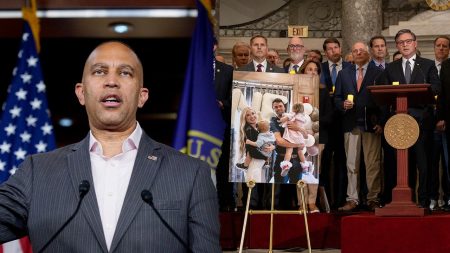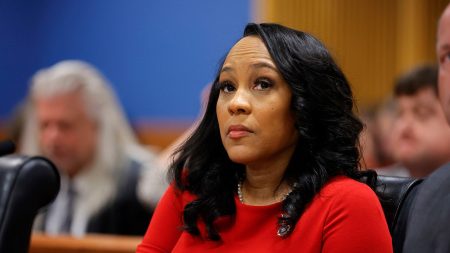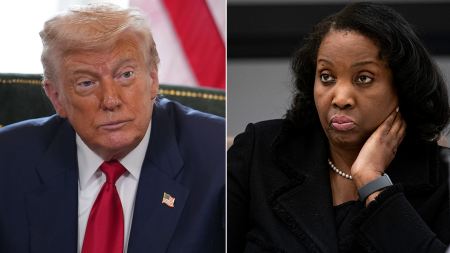Throughout Donald Trump’s time in office, his approval rating never reached 50% in Gallup Organization polls. However, recent surveys show a more positive retrospective view of his presidency, with 55% of Americans considering it a success. These assessments are raising concerns for Democrats, especially as Joe Biden’s approval ratings remain low. To secure a second term, Biden’s campaign is focusing on contrasting his record with Trump’s, highlighting areas such as health care, the economy, and immigration.
Historically, approval ratings for former presidents tend to rise once they leave office, but the difference with Trump is that he’s seeking a return to the White House. Public perception of past presidents is typically of interest to historians, but this year, these reassessments will play a role in deciding control of the White House. Biden’s campaign is now ramping up efforts to remind voters of the damage caused by Trump’s presidency and emphasizing the improvements made under Biden’s administration.
Surveys indicate that Trump’s retrospective approval ratings have improved since leaving office. The majority of voters now view Trump’s presidency favorably, especially in regards to the economy, immigration, and crime. Current frustrations with Biden’s leadership are boosting Trump’s appeal, especially among Republican and Democratic voters. Trump is seen as projecting strength and success, qualities that voters find lacking in Biden’s administration.
Campaign strategies are shifting to highlight specific policy differences between Trump and Biden, with a focus on health care, immigration, and economic performance. Democrats acknowledge the challenge of countering positive views on Trump’s economic record but believe there is still much to dislike about his time in office. The goal is to remind voters of the controversies and shortcomings of Trump’s presidency to steer them away from a potential return to office.
The emphasis on contrasting Trump’s record with Biden’s is particularly noticeable among Black and Hispanic voters, who may view Trump’s economic policies more favorably than Biden’s. Despite positive views on the economy under Trump, Democrats are working to underscore the negative aspects of his presidency and advance a narrative that reminds voters of the challenges and controversies associated with his time in office.
Ultimately, the effectiveness of highlighting Trump’s past record in shaping voter decisions for the future remains uncertain. While retrospective assessments may influence perceptions of Trump, current issues such as inflation, border security, and crime are driving voter priorities. Democrats are hoping that by reminding voters of Trump’s past actions, they can sway opinions about his future plans and cast doubts on the potential consequences of a second Trump term. The challenge lies in convincing voters to prioritize concerns about Trump’s past over issues where they currently express more confidence in his leadership.












